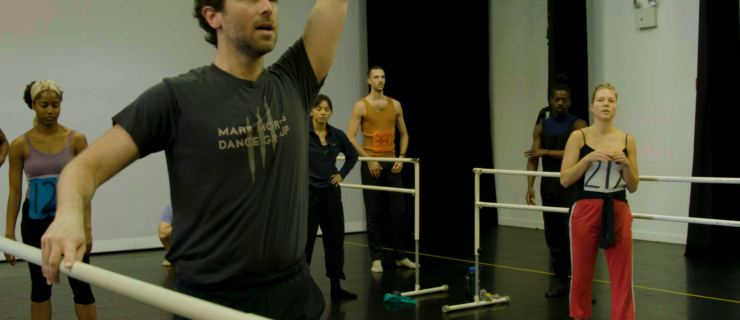Tara Nicole Hughes on How The Little Mermaid Brings Dance Under the Sea
Bringing Disney’s animated classics to live-action life has taken more than a dusting of pixie dust over the years. The latest adaptation, The Little Mermaid, may be the most extravagant yet: It features a star-studded cast that includes Halle Bailey (Ariel), Daveed Diggs (Sebastian), and Melissa McCarthy (Ursula). But the finished product has been a long time coming. After the pandemic forced a seven-month abandon-ship in the middle of shooting, the film will finally hit theaters on May 26.
Director Rob Marshall tasked choreographer Joey Pizzi and co-choreographer Tara Nicole Hughes with creating movement for sea creatures and humans alike. Hughes—who’s also made her mark on the dance-forward films Chicago, Burlesque, and Mary Poppins Returns—talked about the process of bringing The Little Mermaid’s dancing into the deep end.

When did you come onboard The Little Mermaid?
I joined the creative team in May of 2019. Our first task was to discover which marine animals would best lend themselves to movement, specifically for the film’s biggest number, “Under the Sea.” We went through an entire casting process to choose our main sea creatures. They ended up including feather stars, ribbon eels, sea turtles, and even a mimic octopus.
What else inspired your choreography?
The original film’s Caribbean setting and music were definitely driving forces, as well as observing the sea creatures’ natural movement. For instance, when they’re swimming, feather stars look like showgirls, so that’s what they became in “Under the Sea,” dancing around Halle. The underwater world is already dancing—we just don’t normally see it.
How did that then translate to animation?
Rob had the brilliant idea to bring 16 dancers from Alvin Ailey American Dance Theater to set “Under the Sea.” We used multiple 360-degree cameras to capture every angle of the dancers’ movement. That became the framework for the visual-effects artists to use for the sea creatures.
What was the approach to scenes that took place in or under water?
If a water scene involved anything above the waterline, we shot it in the water as normal. We shot all of the underwater scenes with a technique called “dry for wet,” which is a full blue-screen environment. Every single frame had to be choreographed or staged—not just the dance sequences. The actors used different kinds of rigs to simulate swimming, which required an entire stunt team to operate. Everyone had to know exactly what was supposed to happen on each count of music. We had to rehearse everything almost as much as a stage show, because there couldn’t be any surprises on filming day.
How did the cast handle those challenges?
Halle has such a natural grace about her and she was great in the water. It was more about building strength, learning the choreography, and getting used to the rigs. And Melissa, she’s fearless. She wanted to slide down Ursula’s clamshell right away and swim all over her lair. Everybody had to put in work, of course, but the whole cast was so naturally skilled that it made our jobs easier.
You’ve worked with Rob Marshall for a long time. How has that relationship evolved?
Joey, Rob, and I have worked together since my first project in 1996, which is hard to believe. Because of our history, we understand each other. Rob always has a clear vision, and he’s a master communicator, so we just follow his beacon of light. He also has a way of attracting the very best casts.
What were your biggest takeaways from this project?
With such huge technical challenges, you just have to stay the course. Every frame had blood, sweat, and tears poured into it, but all you see onscreen is joy, elegance, and love, which means we did our jobs well.




